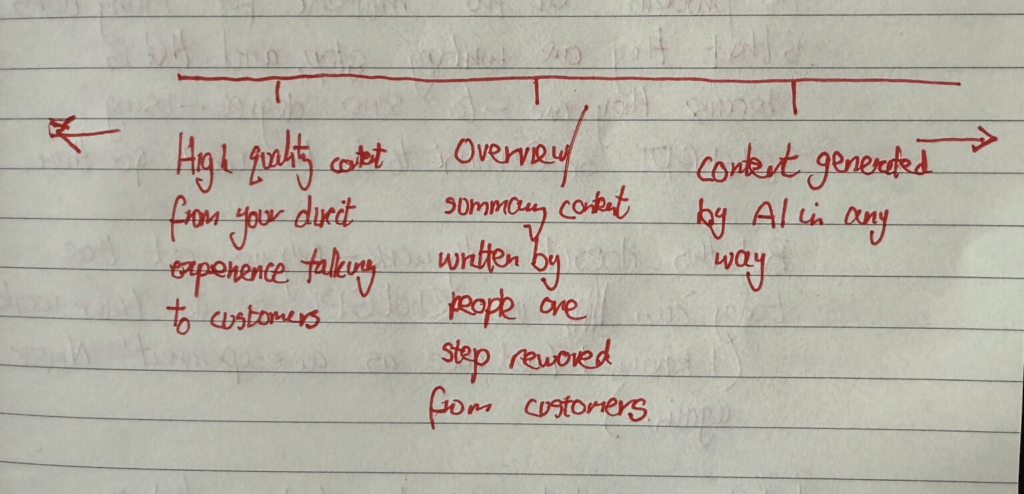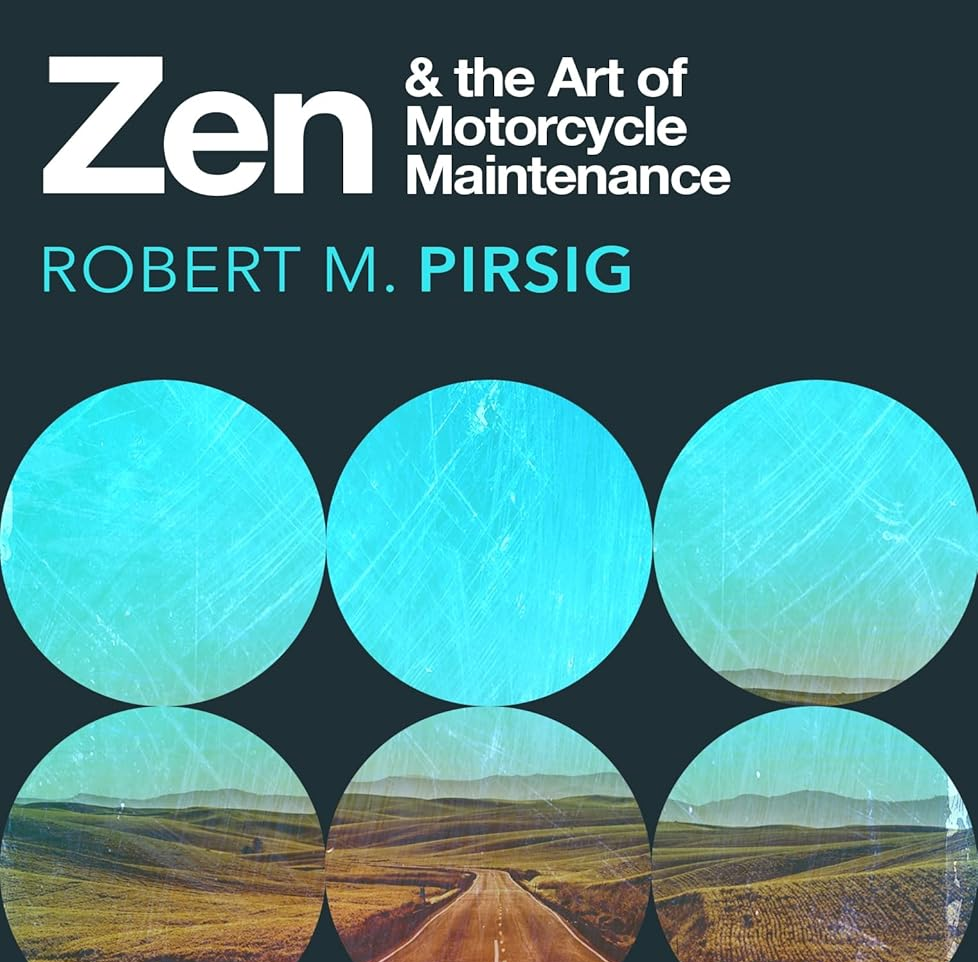Introduction
What is “quality” content?
If you’ve ever read Zen and the Art of Motorcycle Maintenance by Robert Pirsig, you’ll know his reflections on craftsmanship go far beyond fixing bikes. As he wrote:
“[In a craftsman], the material and his thoughts are changing together in a progression of changes until his mind’s at rest at the same time as the material is right… The state of mind which enables a man to do work of this kind is akin to that of a religious worshipper or love. The daily effort comes from no deliberate intention or program, but straight from the heart.”
So what does this have to do with marketing B2B software? Everything. Quality content doesn’t just appear—it’s the product of care, thought, and a refusal to cut corners. And in a world where ChatGPT and Gemini can churn out endless filler, the question is: how do we balance speed with true understanding?
1. Quality comes from craftsmanship, not shortcuts

Pirsig’s idea of quality begins with the mindset of a craftsman: someone who approaches their work as an act of care. Marketing is not so different. It’s easy to produce “good enough” content that ticks the boxes—an SEO-friendly headline, a keyword-laden body, and a quick conclusion. But “good enough” rarely makes an impact.
Craftsmanship in marketing means paying attention to the details that others overlook. It’s about making sure the story fits the audience, the examples resonate, and the argument stands up to scrutiny. That effort creates trust with your audience.
Shortcuts, by contrast, show through quickly. Readers can tell when a piece was rushed or when it lacks real understanding. In B2B, where buying cycles are long and decisions are complex, that kind of shortcut can erode credibility.
2. It’s about how you conduct yourself to get the right results
Content is at the core of almost every marketing role. But while output matters, how you go about producing it matters even more. The process you follow—whether you take time to think, reflect, and refine—directly affects the quality of what you publish.
This isn’t about perfectionism. Few teams have the luxury of unlimited time, and deadlines are real. Instead, it’s about finding the balance between speed and depth. Are you creating something your company can stand behind, or are you cutting corners for the sake of throughput?
The companies that consistently build trust with their audiences are the ones that find this balance. They know that content is not just a task to be completed, but a reflection of their brand, their people, and their standards.
3. AI tools can’t replace real understanding
Many marketing teams are now experimenting with ChatGPT, Gemini, and other AI writing assistants. At first, it seems like a time-saver. You can generate an outline, expand bullet points into paragraphs, even draft an entire blog in minutes.
But there’s a problem. If you rely entirely on AI, you end up with content that looks right but lacks depth. It’s the equivalent of a student handing in an essay written by someone else: the words are there, but the understanding is missing. Readers pick up on that lack of authenticity quickly.
I know this from experience. I once tried using ChatGPT to write content as an experiment. On the surface, it looked fine. But the work felt hollow, and I learned nothing from the process. I decided never again—because without understanding, content has no foundation.
4. Real learning builds pride in your work
A better approach is to use AI sparingly—as a support, not a substitute—and to invest in real learning. Recently, I needed to use Docker to isolate two jobs running in Linux. I could have relied on ChatGPT prompts like: “Use Docker to create 2 new environments for me.”
The AI gave me fragments of an answer, but nothing that built my understanding. I didn’t know why containers worked, what the benefits were, or how environments could communicate. If I had stopped there, I would have had a shallow solution—and no ability to troubleshoot later.
Instead, I worked it out for myself, guided by Pirsig’s principle of focusing on quality. I learned enough to understand how Docker really worked, and I felt a sense of pride in the result. That pride matters—it creates confidence in your own expertise, and it shows through in the content you create.
5. Human insight will always beat AI slop
Ultimately, content written with care—by fallible, thoughtful humans—will always outperform what I call “AI slop.” Audiences crave originality, perspective, and voice. These are things that AI, for all its power, cannot truly replicate.
There’s also a practical point. Every AI query consumes processing power and energy. By doing the thinking yourself, you save not just your credibility but also resources. It’s a small act of responsibility in a world increasingly flooded with machine-generated text.
Quality content comes from insight, not automation. It comes from asking the right questions, reflecting on your experiences, and presenting ideas in a way that matters to your audience. That’s why, even as AI becomes more common, human-centered quality will continue to stand out.
Conclusion
In marketing, as in Pirsig’s philosophy, quality is not just about the output but about the mindset of the person creating it. AI can be a useful tool for sparking ideas, but it can’t replace the depth of insight you gain from doing the hard work yourself.
Writing content that matters takes time, thought, and pride. It’s about more than hitting publish—it’s about understanding your craft well enough to stand behind it. That’s the kind of content that will always stand out from the noise.
For more on this idea of quality in work, see:
This article builds on ideas first explored at Pirsigism.com — a live experiment in how Quality and craftsmanship influence modern marketing.

